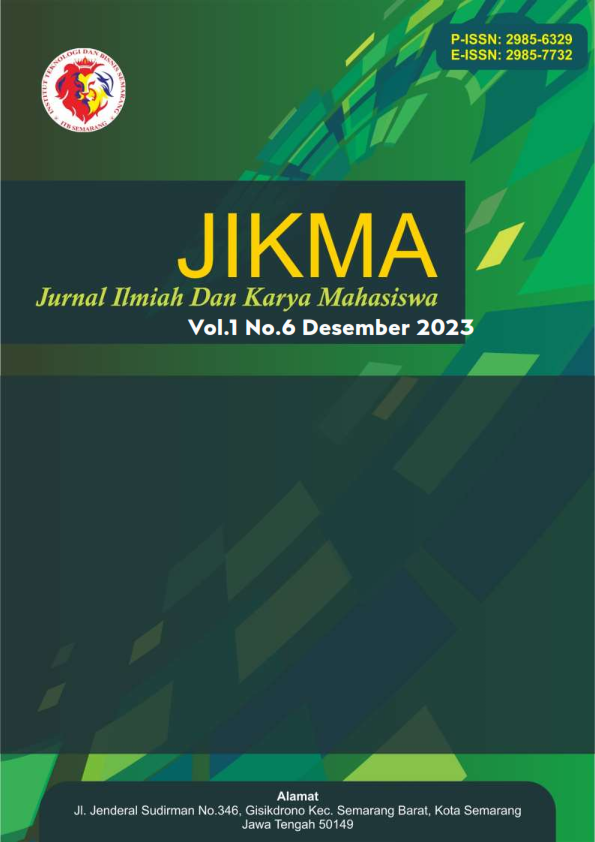Pengaruh Penggunaan Sistem Penurun Temperatur Air Pendingin Jenis Roda Pendingin Terhadap Konsumsi Bahan Bakar dan Laju Peningkatan Temperatur Motor Diesel Stasioner
DOI:
https://doi.org/10.54066/jikma.v1i6.1141Keywords:
cooling wheel fin angle, natural cooling system, diesel stationary motorAbstract
In stationary diesel motors, the temperature reduction is carried out by cooling water and the temperature of the cooling water is lowered by environmental or natural air. This will be problematic if used in areas with relatively limited water supplies, where for stationary diesel motors of the above type, cooling water is always reduced and must be added. Throughout the operation. Apart from overcoming the problems above, the aim of this research is to obtain the most economical reduction in fuel consumption by using a system for reducing the temperature of the load wheel cooling water on stationary diesel motors. The research method uses the independent variable in the form of a load wheel with variations in the number of fins and variations in fin angle, the dependent variable is the rate of increase in heat and fuel consumption while the control variable is taken as room temperature during the test. The test results show that the greater the angle of the fin to the center line of the flywheel has an effect, where the greater the fin angle of the flywheel will cause the rate of increase in water temperature in the reservoir to be slower than the rate of increase in water temperature with a larger angle small, even though the effect is small, it results in a reduction in fuel use to an average 50% The conclusion obtained is that the use of a load wheel cooling water temperature reduction system on stationary diesel motors is better than the use of a standard (natural) cooling system. Almost the same as a radiator system.
References
Anonim. 2000. New Step I. Toyota, Jakarta.
Eko Surjadi. 2016. Pengaruh Penggunaan Radiator Pada Sistem Pendingin Motor Diesel Stasioner Satu Silinder Terhadap Laju Kenaikan Suhu Air Pendingin. Jurnal AUTINDO Vol 1 No 3 (2016). Politeknik Indonusa: Surakarta http://autindo.poltekindonusa.ac.id/index.php/view/article/view/24
Furuhama, S . 1995. Motor Serba Guna. Pradya Paramita, Jakarta.
Holman, J.P. 1984. Perpindahan Kalor. Penerbit Erlangga, Jakarta.
M. Jufri Nizam, Syahrizal Syahrizal. 2018. Modifikasi Sistem Pendingin Mesin Diesel Merk Dongfeng Menggunakan Heat Exchanger Untuk Kapal Motor Nelayan. INOVTEK POLBENG Vol 8, No 1 (2018). Politeknik Negeri Bengkalis: Riau
http://ejournal.polbeng.ac.id/index.php/IP/article/view/306
Nico Saragih, Hasan Maksum dan Toto Sugiarto. 2017. Pengaruh Variasi Cairan Pendingin (Coolant) Terhadap Efektivitas Radiator Pada Engine Diesel. Automotive Engineering Education Journals Vol 6, No 4 (2017). Universitas Negeri Padang: padang
http://ejournal.unp.ac.id/students/index.php/poto/article/view/3517
Tsuda, K.1997. Motor Diesel Putaran Tinggi. Pradya Paramita, Jakarta.
Wiranto Arismunandar. 2002. Penggerak Mula Motor Bakar Torak, ITB, Bandung.







